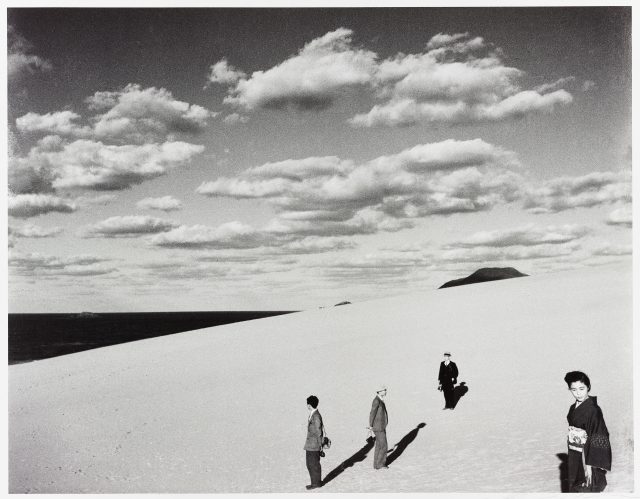(born Sakaiminato, 1913–2000)
Ueda remained near his hometown in Tottori Prefecture for much of his career. Interested in photography since high school, he graduated from the Oriental School of Photography in 1932. Inspired by Shiotani Teiko, as well as European photographers such as Jacques-Henri Lartigue, Man Ray, and Andre Kertesz, Ueda gained recognition for his combination of realism, regional attachment, and a modern approach to composition. He began his series Tottori Sand Dunes in the 1930s, but stopped working during World War II to avoid becoming a military photographer. Although a more socially oriented realism prevailed by the 1940s, he resumed his project in 1945 and continued to develop his unique, surrealistic style.
For nearly five decades, Ueda returned to the stark beauty of the remote Tottori and Shimane Prefectures to stage dreamlike scenes with children, family members, and himself. His work was widely exhibited internationally, including in a 1960 exhibition curated by Edward Steichen at New York’s Museum of Modern Art. Ueda worked well into the 1990s, and in 1995, the Shoji Ueda Museum of Photography opened in Tottori Prefecture.
Images © Shoji Ueda Office





